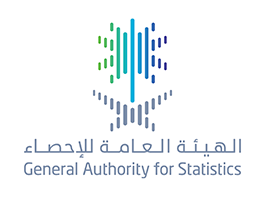
الهيئة العامة للإحصاء: انخفاض معدل البطالة للسعوديين خلال الربع الرابع 2018م مقارنة بالربع السابق
GASTAT releases the Labour Market Bulletin, Quarter (4) 2018
GASTAT: Saudis’ Unemployment Rate Decreases During the fourth Quarter of 2018 Compared to the Previous Quarter
On Sunday Rajab 24th, 1440H. (corresponding to March 31st, 2018) GASTAT released the Labour Market Bulletin for the fourth quarter of 2018 on its official website (www.stats.gov.sa). The bulletin is based on the estimates of the Labour Force Survey that is conducted by GASTAT on a quarterly basis as well as the labour market data from the administrative records available at the related entities (Ministry of Labour and Social Development, Ministry of Civil Affairs, General Organization for Social Insurance, Human Resources Development Fund, and National Information Center).
The results of the 2018 fourth quarter bulletin, based on the estimates of the Labour Force Survey, showed a decrease in the total unemployment rate of Saudis (15 years and above) reaching (12.7%) compared to (12.8%) in the previous quarter. The Saudi males’ unemployment rate reached (6.6%), whereas the unemployment rate of Saudi females reached (32.5%) in the fourth quarter of 2018. The unemployment rate for the total population (15 years and above) stabilized at (6.0%) in the fourth quarter of 2018.
The results of the survey also showed that the economic participation rate of total Saudis (15 years and above) reached (42.0%) in the fourth quarter of 2018. The economic participation rate reached (20.2%) among Saudi females, and (63.0%) among Saudi males in the fourth quarter of 2018. Also, the bulletin indicated that the total employed Saudis (males and females) reached (3,111,199) based on the data of the administrative records.
According to the results of the bulletin and based on the data of the Ministry of Civil Service (Jadarah and Sa’ed) and the data from the Human Resources Development Fund (Taqat), the total number of Saudi job seekers reached (970.229) in the fourth quarter of 2018.
GASTAT has defined jobseekers as Saudi individuals (males and females) registered in job seeking programs of the Ministry of Civil Service (Jadarh and Sa’ed) as well as Human Resources Development Fund (Taqat) where they entered their personal data, qualifications, experiences, and CVs electronically. Jobseekers included in the administrative records are not subjected to the internationally recognized criteria and conditions of the International Labor Organization (ILO); hence, not all of them are considered unemployed individuals. Therefore, not every job seeker is an unemployed individual; they may be looking for a work while still working in another job, as in the case of job seekers in the government sector where they work for their own business and not registered as employees in the governmental administrative records (Civil Service, Social Insurance, commercial registers, and municipal licenses) .
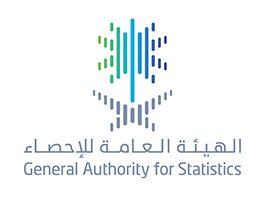
الهيئة العامة للإحصاء: ارتفاع الرقم القياسي لأسعار الجملة خلال شهر فبراير 2019م
GASTAT: Wholesale Price Index Increases in February 2019
On Wednesday, the 13th of Rajab 1440 H/ 20th of March 2019 AD, the General Authority for Statistics (GASTAT) released its the monthly indicator of Saudi wholesale price index for February and it was published on its website www.stats.gov.sa . The indicator recorded (116.5) points with 0.1% increase in February 2019, compared to last month (January) where it recorded (116.4) points. The indicator includes five main sections; agriculture and fisheries products, raw materials and metals, Food products, beverages, tobacco and textiles, metal products, machinery and equipment, and other goods.
The report attributed that increase to the outcome of the changes of the five main sections composing this indicator; metal products, machinery and equipment increased to 1.0%. On the other hand, raw materials and metals decreased by 1.0%, agriculture and fisheries products went down 0.5%, and other goods 0.5%. However, food products, beverages, tobacco and textiles remained without any changes.
Saudi Arabia's wholesale price index measures the average changes in the prices of goods and services sold in primary markets and takes into account the change in price only. Accordingly, all changes resulting from differences in quality, quantity discount, Shipping method, and other influencing factors in order to obtain the net price only after excluding all the mentioned effects. This number is general for all and is prepared in all parts of the Kingdom.
It is worth mentioning that the wholesale price index is used to monitor the changes in the prices of local or imported goods, which are dealt with in the market, and consequently to determine the price trends and the conditions of the market variables. The wholesale price index is one of the important tools used to prepare national accounts, by clearing income and national groups from the impact of price changes.
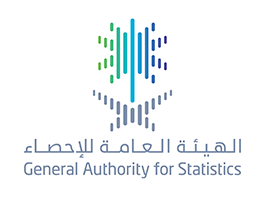
الهيئة العامة للإحصاء: انخفاض الرقم القياسي العام لأسعار المستهلك لشهر فبراير 2019م بنسبة 0.2%
GASTAT: Consumer Price Index (CPI) Decreases by 0.2% in February, 2019
On Tuesday, Rajab 12th, 1440 H (corresponding to March 19th, 2019), The General Authority for Statistics (GASTAT) released its monthly report of Saudi Arabia’s Consumer Price index (CPI) for last February. The report was published on its official website www.stats.gov.sa.
(CPI) went down 0.2% in February and reached (105.7) points compared to (105.9) points in January at the same year.
On the other hand, the report attributed the monthly decline of the index to the declines of the six sections composing it, which are: housing, water, electricity and gas section with 0.6%, home furnishing and equipment section with 0.4%, food and beverages section with 0.2%, culture and entertainment section with 0.2%, transportation section with 0.1%, and finally telecommunication section with 0.1%.
In contrast, two of the main sections witnessed an increase, which are: restaurant and hotels sections with 0.3 %, and personal goods and services section with 0.2%.
Tobacco section, clothing and shoes section, health and education sections remained stable with no change.
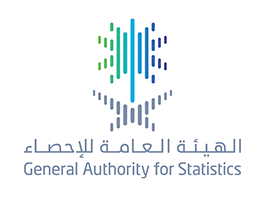
"الإحصاء" تُصدر مؤشر مساهمة المنشآت الصغيرة والمتوسطة في القطاع الخاص للربع الثالث 2018م
Small enterprises’ revenues increase by (0.9%)
“GASTAT” releases the indicator of SMEs contribution to private sector for the third quarter of 2018
On Monday 18th of Rajab 1440 H corresponding 25th of March 2019, the General Authority for Statistics (GASTAT) released the results of SMEs contribution to private sector’ indicator for the third quarter of 2018. The indicator is published on GASTAT official website www.stats.gov.sa. It measures the contribution of SMEs in the growth of the private sector, while reflecting the development of these enterprises.
The results showed an increase in the revenues of small enterprises which employ (6 to 49) workers in the private sector with a percentage of (0.9%) compared to the third quarter of last year (2017). However, the revenues of medium enterprises that employ (50 to 249) workers in the private sector registered (113,654,809) SAR in quarter 3, 2018.
The results also demonstrated an increase in the number of small enterprises workers as they recorded (1,627,482) workers in quarter 3, 2018 with a percentage of (1.8%) compared to the same quarter of 2017.
Regarding the numbers of workers in medium enterprises which employ (50 to 249) workers in the private sector, they increased to reach (917,847) workers in quarter 3, 2018 with a percentage of (2.5%) compared to quarter 3, 2017.
The results of the indicator of SMEs contribution to private sector (quarter 3, 2018) indicated a decrease by (2.4%) in the numbers of workers in micro enterprises which employ (less than 5 workers) in the private sector with (2,015,019) workers during the third quarter of 2018, compared to the third quarter of 2017.
On the other hand, the results also revealed a decrease in the revenues of micro enterprises that employ (less than 5 workers) in the private sector during the third quarter of 2018, with a percentage of (3.0%) compared to the third quarter of 2017, where they registered (171,256,482) SAR.

الهيئة العامة للإحصاء: المملكة على بُعدِ عامٍ من تعداد السعودية 2020
Tuesday Evening March 17th, 2020 is the Beginning of the Fifth Census’ Actual Enumeration
GASTAT: Saudi Arabia is One Year Away Until the Saudi Arabia Census 2020
The General Authority for Statistics (GASTAT) revealed that the fifth census of population, housing and establishments in Saudi Arabia “Saudi Arabia Census 2020” will start on Tuesday, March 17th, 2020, which is the beginning of the actual enumeration “evening of time reference”. The census will provide a broad statistical database to be used as a reliable basis when conducting studies and research required by the development programs and plans in Saudi Arabia and the Saudi Vision 2030. Furthermore, it provides statistical data and indicators to measure changes in population characteristics over time, conducts local, regional and international comparisons, and review and evaluate future population estimates.
In this Census, GASTAT will rely on different methods to ensure getting accurate information through linking data together in addition to the cooperation with the National Information Center and the Saudi Post. This is done in accordance with the preparations made by GASTAT and their partners in order to implement the “Saudi Arabia Census 2020”. This census will be different from previous censuses due to the change in the enumeration method by integrating the register-based data with field data.
The official spokesman of GASTAT , Mr. Taiseer Al-Mufrrej, said that GASTAT has completed the updating of the populated areas directory in all regions of the Kingdom, in addition to updating the postal addresses in several administrative regions, which are: Makkah, Madinah, Jazan, Najran, Al-Baha, the Northern Border, Tabuk, Hail and Al-Qassim. He also explained that during the month of Sha'ban the postal addresses in the city of Riyadh and the eastern region will be updated. He also added that the preparation of the operational plans for manpower, training, and publishing has been initiated. This is the first phase of the Saudi Arabia Census 2020, which will be followed by the second phase (the actual enumeration phase), then the third phase (data processing phase) then finally the announcement of the results.
The first official census in Saudi Arabia was conducted in 1394H. (1974), then the second was conducted in 1413H. (1992), followed by the third in 1425H.(2004). Finally, the fourth census made by the Central Department of Statistics and Information prior to the transformation into the General Authority for Statistics was conducted in 1431H. (2010). The total population in the 2010 census was (27,136,977) people.
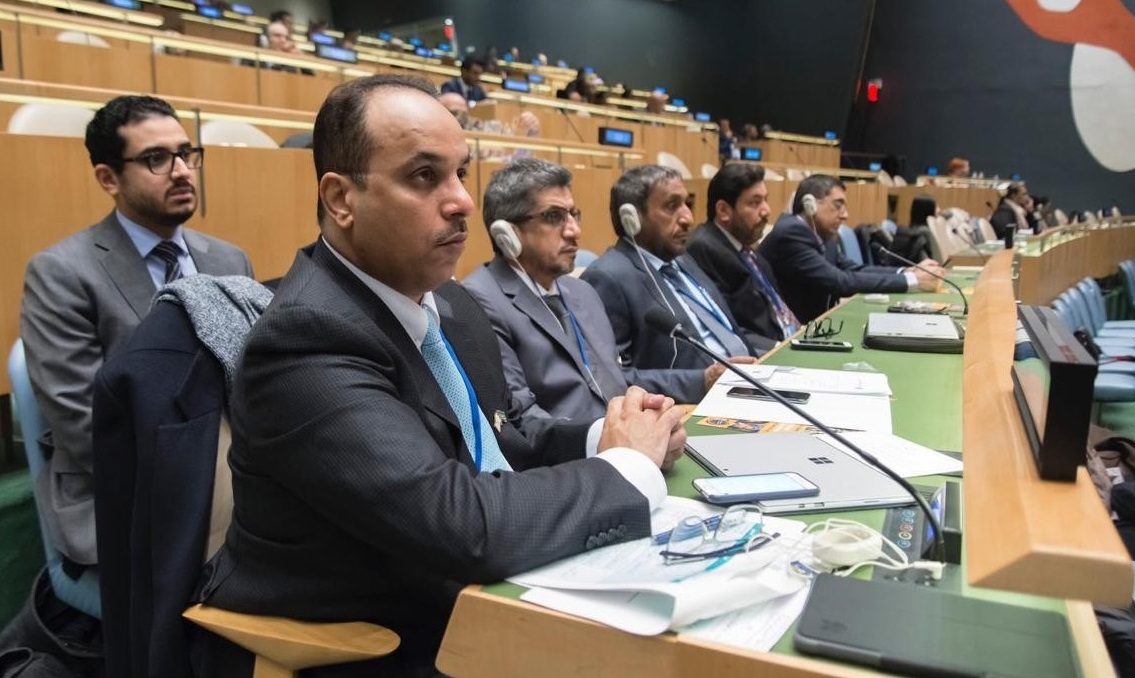
المملكة تختتم مشاركتها في أعمال الدورة الـ (50) للجنة الإحصائية للأمم المتحدة
Saudi Arabia Ends its Participation in the Works of the United Nations Statistical Commission (50th Round)
Yesterday 9, Mar 2019, Saudi Arabia Ends its Participation in the works of the United Nations Statistical Commission (50th Round). It started last Tuesday until yesterday evening at the United Nations headquarter in New York City. The delegation was headed by his Excellency Dr. Fahad bin Sulaiman Altekhaifi, president of the General Authority for Statistics. The participation was an extension of the Authority strategy for international collaboration, Altekhaifi said. Also, to benefit from the best statistical practices to be reflected on the development of the statistical sector in Saudi Arabia, he added. Moreover, Saudi Arabia has reviewed a number of development axes for the statistical sector. The works of the (50th) meeting dealt with a number of important topics related to the role of statistical data in the development process, the fundamental principles of official statistics, open data and national quality assurance frameworks, regional statistical development, discussing all the matters related to national accounts and price, international trade statistics, industrial statistics, and statistics related to disasters, in addition to education statistics.
the General Authority for Statistics of Saudi Arabia will publish a statistical report of the goals of sustainable development indicators with social, economic and environmental dimensions in time series that will ensure measuring the progress in achieving them, President of GASTST clarified. Saudi Arabia is working alongside with international organizations of the indicators to measure all the indicators correctly, he added.
The Authority participated in the Works of the United Nations Statistical Commission through a variety of themes and issues, including: educational Statistics which indicated that training and education sector in the kingdom of Saudi Arabia witnesses an increasing attention under Saudi Arabia's Vision 2030, and national transformation program which has developed many initiatives related to the development of education and training and aims to raise the quality of education and training outputs, make them relevant to the labor market and encourage creativity and innovation in scientific research as the policy-making and planning in this field requires accurate and comprehensive data to support decision makers. It has also developed register-based data of education, through conducting a household survey regularly every three years for training and education.
General Authority for Statistics will provide a quality services in order to reach the expectations and the needs. It will also provide high quality services through statistical data collection as well as analyzing, keeping and publishing the data. Also, through implementing and improving the quality system. It seeks to fully implement the National Accounts System 2008 which helped in developing many forms of economic and household surveys to assist obtaining the necessary data to apply all the accounts in accordance with the concepts of the System of National Accounts 2008, GASTAT is also working to build national accounts and economic statistics capabilities to enable them to carry out their tasks in accordance with the recommendations of international standards.
GASTAT also stressed on the importance of understanding the system of national accounts for urgent economic developments, and prepare accessories to the System which clarifies how to address these developments through theoretical framework and applied framework as well as show experiences of countries.
It is worth mentioning that Saudi Arabia has been chosen with (11) countries globally to fill the membership of the board of directors of the International Comparison Program in the United Nation of the period 2017-2019, based on the vote of the Statistics Division of the United Nation and Data Development Group of the international bank to represent the countries of Western Asia. Saudi Arabia has been chosen to this membership as appreciation to the positive role of GASTAT in various statistical programs organized by the United Nation. The formation of the administrative structure of the International Comparison Program includes: United Nation Statistical Commission, management board (GASTAT membership), the joint work teams among agencies, consulting and technical coordination committees, as well as the implementing international agency (World Bank), regional offices, the Statistical Office of the European Union (Euro stat), the Organization of Cooperation and Development, and the participating national statistical offices.
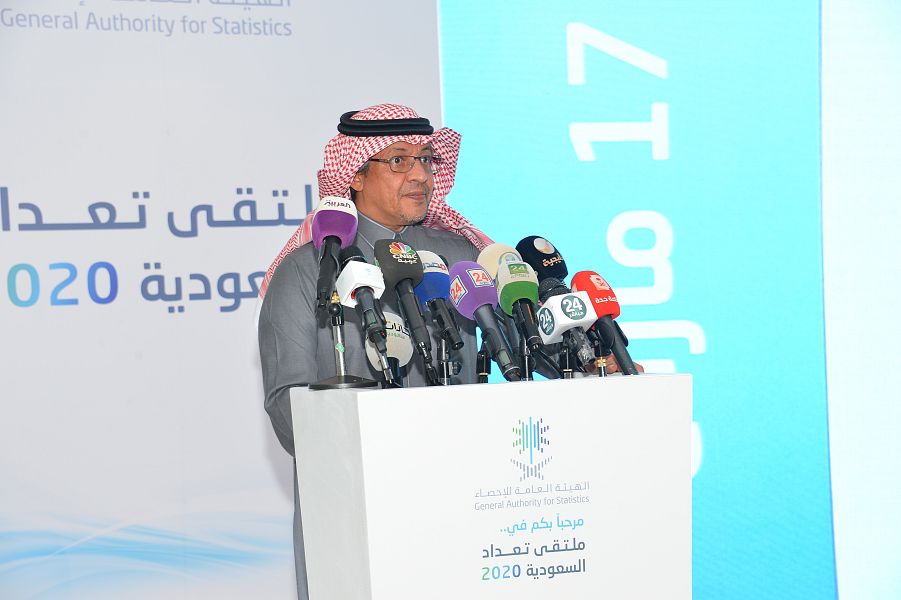
الهيئة العامة للإحصاء تعلن عن ليلة الإسناد الزمني لتعداد 2020

الهيئة العامة للإحصاء تشارك في الاجتماع الرابع لمجلس الإدارة لبرنامج المقارنات الدولية 2019م
GASTAT Participates in ICP Board of Directors Fourth Meeting (2019)
The General Authority for Statistics (GASTAT) has participated in the International Comparison Program (ICP) board of directors fourth meeting held in New York, USA, on Sunday Jumada Al-Thani 26th, 1440 H. (March 3rd, 2019). Dr Fahad Altekhaifi, the President of GASTAT, indicated that the board of directors comprises eleven state members including the Kingdom of Saudi Arabia which represents West Asia. It discussed the progress reached so far in the implementation of the ICP of 2017, the communication and dissemination strategy, the preparation for the forthcoming session in 2020 in addition to the discussion of several other topics relevant to statistical work.
Dr Altekhaifi also added that the selection of Saudi Arabia to be a member in the ICP board of directors for the years 2017-2019 comes as a recognition of GASTAT positive role in the various statistical programs organized by the United Nation. He also said that it is an affirmation of the Kingdom’s active role in the world’s statistical map, and reflects the results of the statistical sector strategic transformation in the Kingdom, which is supported by the government due to its role in supporting national development decisions. The World Bank's International Comparison Program is a global statistical partnership program based on a statistical system that is integrally connected to the economic analysis. It uses statistical methods to derive the necessary data to calculate the PPP for about 200 countries and economies worldwide. It will facilitate the use of PPP as currency converters, which will allow the comparison of the total economic indicators and the economic conditions of countries worldwide which helps to allow users to track progress towards achieving sustainable development goals and effectively guide programs towards their goals. The program is geographically divided into six regions under the supervision of the ICP office at the World Bank.
Altekhaifi confirmed that the program’s work and results will help shape policies for global comparison to support statistical products of the participating countries. It will also enable GASTAT to access the best statistics global practices to improve and develop the statistical work.
It is noteworthy to mention that the ICP board of directors is compiled of, chairpersons, directors and leading experts in 11 statistical agencies participating in the program. They are distributed according to the regional areas: Africa, Asia, Pacific Islands, Latin America, the Caribbean, West Asia, Commonwealth of Independence States, European Union, non-European Union States, members of the organization for Economic Cooperation and Development, representatives of the International Monetary Fund, World Bank, UN Statistics Division, and the Inter-Agency Coordination Group.
